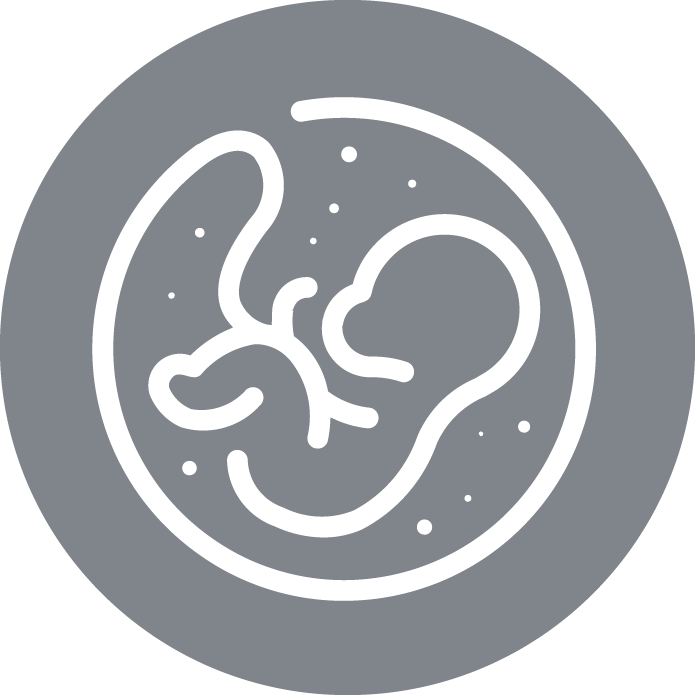International Endometriosis Day
Endometriosis is a disease characterized by the presence of endometrial tissue outside the uterus, usually in the ovaries, fallopian tubes, urinary bladder or intestines. As a result, the endometrium becomes inflamed and alters the process of menstruation, making it much more painful and causing heavy bleeding.

In honor of International Endometriosis Day, Dr. Alberto Vázquez will tell us more about this disease which affects nearly 10-15% of all women.
“Endometriosis is still a rather unknown disease, which is why the average time of diagnosis within the more developed countries takes from 7 to 10 years.”
El Dr. Alberto Vázquez
Dr. Alberto Vázquez specializes in the treatment of endometriosis, a disease that affects around 15% of all fertile women. Endometriosis can produce infertility, and it also causes debilitating pain for the women who suffer from it. Most specialists in his environment agree that the surgery to correct endometriosis has a high percentage of positive results in spite of being one of the most complex surgeries in its field. According to Vazquez, women are now more aware of the symptoms of this disease and of the problems that it can cause when they are trying to get pregnant. Even so, however, he still believes that “endometriosis is still a rather unknown disease, which is why the average time of diagnosis in more developed countries takes from 7 to 10 years”.
People often label endometriosis as one of the invisible diseases, but nowadays, more and more women are acknowledging its presence. What has caused this change in perspective?
This change has come about because we find out about world occurrences instantaneously. Information is immediately known; social networks and multimedia devices keep us abreast of what is going on in the subjects that interest us. Honestly, I do not believe that there are more women nowadays who are acknowledging this disease. I think the numbers are the same as before but that more cases are now being brought to our attention.
How would you compare a patient from ten years ago with a patient from today?
I find that nowadays, patients are equally informed and misinformed, probably due to the popularity of Internet searches that each person does on her own. Our access to information and the way we handle it has also changed. Before the internet searches existed, in order to find information regarding endometriosis, you had to buy a book about medicine. Now you can simply type the word into a search engine and read the results. The main difference is that the information that you read in a book is accurate, but the information that you read on the internet is not always reliable.
The good news is that with free access to information, patients are able to search for and to find professionals with the proper training to handle this complex and controversial disease.
In terms of the patients' symptoms and concerns, there have been few changes. If I had to highlight one, however, I would say that in general, there is increasing concern about fertility in patients with endometriosis.
What are the differences in treatment from the initial stages of the disease until now?
In the beginning, the treatment was symptomatic. The main symptom of endometriosis is pain, the type that limits the quality of life for the person who is suffering. If the medical treatment did not work, the next stage was always surgery. Nowadays, we know that the surgery for endometriosis is one of the most complex surgeries that exists. Although we are constantly searching for treatments to avoid the complications of surgery, we have had little luck in finding any truly effective ones.
Among the available treatments, we have found the use of analgesic, anti-inflammatory, and hormonal treatments to be effective. The most successful treatments are contraceptives, since they have been shown to stop the disease from progressing. If these medical treatments do not work, then the alternative solution is surgery. Highly complex surgery, when done correctly, is quite beneficial for the patients.
Do our specialists possess the sufficient training and qualifications to remedy the needs of the affected population?
Unfortunately, endometriosis is still a very unknown disease for doctors in general and for gynecologists in particular. It takes on average 7 to 10 years for doctors to diagnose this disease even in the most developed countries. It is quite common for these patients to go from doctor to doctor, explaining the symptoms, until they find the professional who can tell them what they really have.
Many endometriosis are diagnosed as fibromialgia or chronic pain with no apparent cause. In many other cases, we tell patients that the painful, disabling dysmenorrhea is normal when it is not.
There are two types of patients: those who know that they have endometriosis and have not yet found a solution, and those who suffer the disease without its having been diagnosed.
In Spain, we have excellent facilities for treating endometriosis, but we need more. Quality training is essential for handling this enigmatic disease.
What are the latest medical developments in endometriosis?
I would highlight cell reprogramming and gene therapy, two areas of current research that are proving to be very promising. However, these are very experimental treatments, since most of them are only being performed on mice and not on humans.
Regarding surgery, I would like to emphasize the importance of laparoscopy and robotic surgery for the surgical treatment of this disease. Although these techniques are not new, we have found that endoscopy is far more beneficial than open surgery when treating this pathology.
What is the future of endometriosis?
Gene therapies and any surgical advances that can reduce complications during endometriosis surgery. I would like to think that progress will be made in the diagnosis so that patients will not have to wait years to find out what they have. But this requires economic investments in training and awareness campaigns. Frankly, I see this as very difficult because it does not only depend on us, the healthcare professionals.
A significant number of infertile patients have endometriosis. Is there any way of preventing infertility among these patients who suffer from endometriosis?
We cannot prevent infertility in patients with endometriosis. Since it is usually diagnosed in young women under the age of 35, and pain and infertility are two of the main symptoms, we recommend egg vitrification for all patients younger than 35 years old. I actually believe that it is a good recommendation for any woman who would like to preserve her fertility before she turns 35. Please excuse me for deviating from the subject, but nowadays, women and couples in general prolong their first pregnancy too much. When they decide to have children with their own eggs, it is often too late, and they have to look for other alternatives. The most determining factor in a woman’s fertility is still her age.
Regarding fertility preservation in patients with endometriosis, egg vitrification is also indicated before any surgery that may affect the ovaries or with any ovarian treatments since both are conditions which will weaken the ovarian function.



